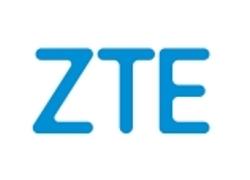At Broadband World Forum (BBWF), Chris Mulley, principal architect at ZTE, urged operators to embrace the future of Fixed Broadband (FBB) connectivity, in order to progress with future demands put to the industry.
The prime theme in fixed networks is the demand for more bandwidth. Subscribers demand multiple services – analytics, mobile, video, web and computing – on one platform, but this ultimately calls for more throughput.
“Tomorrow never waits,” said Mulley. “FBB requires innovative evolution and telecom operators need to change their role to Platform as a Service (PaaS) providers in order to succeed in this competitive industry.”
Various bandwidth-hungry applications are continuously driving the third wave of video. Every wave brings great opportunities; traditional services are declining while video rich services are on the rise. Bandwidth will grow exponentially to meet a variety of application needs and operators must address this rise in traffic and take the initiative in this competitive Big Video era, Mulley explained.

“Big Video brings more revenue opportunities for operators,” said Mulley. “They can add more value to their services by acting as a 4K/8K TV Content providers and compete strongly by providing 100Mbps-1Gbps connectivity.”
Central offices need to be reconstructed to data centres to provide a more flexible and efficient network, and in order to promote customer experience and move the Point of Presence (POP) closer to the subscriber. This can be done by moving to a data centre based network.
Network slicing is critical to supporting new communication services. Virtual Access Node (vAN) meets these requirements, while the physical Optical Line Termination (OLT) is virtualised into multiple vOLTs for dedicated application scenarios, catered for by network slicing. Also, access networks can be sliced in order to support co-invested network sharing scenarios.
“Fixed Broadband networks are crucial to what we need in the future,” Mulley concluded. “FBB provides more capacity, Big Video streaming capabilities, flexibility and cost-effective mobile backhaul with low latency and high synchronisation accuracy. To do this, networks must be simplified to a flatter and more flexible network architecture in order to accelerate service innovation.”
Comment on this article below or via Twitter: @ VanillaPlus OR @jcvplus






